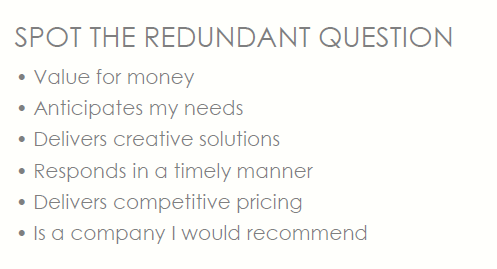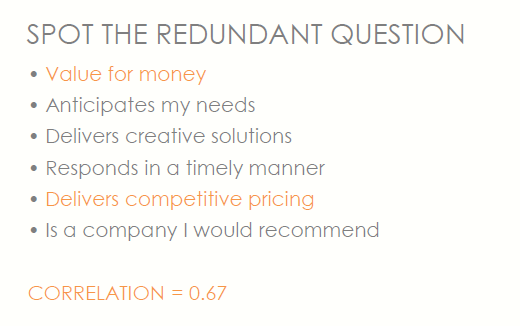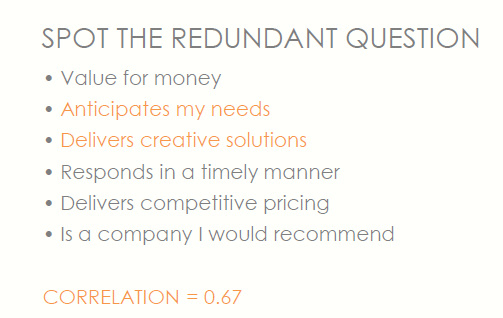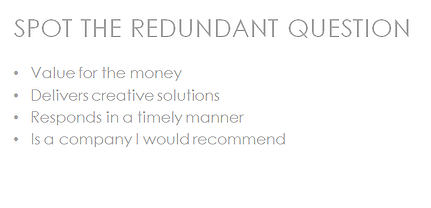I recently attended a conference on the seven habits of highly effective people. When thinking about what I could take back to my organization, one of the most intriguing concepts centered on the fifth step, “seek first to understand, then to be understood”, a.k.a. listening with intent to understand. This intrigued me for many reasons, some of which were related to our internal organizational effectiveness and others that related to our work product with clients. The latter being that, in the same way we need to listen with the intent to understand, we should really be asking questions with the intent to understand. (If it’s the former you’re interested in, I highly recommend attending a seminar!)
This style of listening, referred to as, “empathic listening”, is so powerful because it gives you accurate data to work with. That is ultimately our desire at Lightspeed, providing clients with accurate research data and making the research process easy to conduct. What would empathic questioning look like?
I examined this by looking for parallels that exist between empathic theories and survey design. As I investigated the topic, I encountered a sister research methodology, empathic design. A Harvard Business Review article from November 1997 (thank you, Google!), explains that the application of empathic design “holds the greatest potential benefit when the observation of current or possible customers encounter problems with your products or services that they don’t know can be addressed and may not even recognize as problems.” It is a practice that helps elicit feedback from consumers on problems that they may not even recognize exist, i.e. it helps a brand anticipate the needs of their customers. In online research it’s often the case that our clients are hoping to identify needs that customers themselves may not recognize, but aren’t sure how to design effective surveys to elicit this data. Poor survey design is one of the easiest ways to prevent respondents from leading you towards recognition of your next big opportunity.
So, how can we apply principles of empathetic design and listening to improve survey design? Our VP of Innovation, Jon Puleston, is a highly regarded expert on the most effective ways to ask questions and much of his work fits nicely within this construct. Some of his most recent research focuses on Bonsai Survey Design, a method of rewriting survey instruments with the end goal of producing a pleasant exercise of effort and ingenuity for our respondents (and often the survey authors themselves!). Lightspeed GMI has designed an entire suite of survey question components based on his research; often referred to as “Best In Class” survey questions, which we use as the standard much of our programming.
Here are some general rules about how you could apply empathetic design principles to your survey research:
1.) “Respondent Empathy”
- Rethink the amount of questions that NEED to be asked and the number of people that are needed to answer them
- Reduce the length of interview for respondents and minimize respondent boredom and dropout
- Make sure you’re being realistic about how people are going to take your survey. We estimate that only 20% of surveys the industry produces are 100% compatible for mobile phones.
- Real life tip? Write your questions like you would a tweet. It’ll help you keep it simple.
Below is a good example of this type of thinking. The first version is designed simply from a point of view of what the researcher want to know. The second from the standpoint of the respondent, wanting to actually understand the question and answer it:
2.) “Engage First, Question Later”
- Engage your respondents in the broader exercise first and you will get better research.
- Consider the way that questions are asked to increase respondent interest and engagement
- Real life tip? Gamify your research! Our research has shown that when you engage panelists in game-like interactions they tend to participate longer, provide more thoughtful responses, and suggest more creative ideas.
3.) “Rapid Experimentation”
- Pilot, pilot, pilot! Then...pivot, pivot, pivot! Most of us get the first part right, and the majority of our clients soft launch projects to pilot the survey instrument to ensure their data is coming in as expected. What we see less often is the pivot piece, where you use the soft launch data to determine true sample size needs (often smaller than you’d think) or remove redundant questions (they are almost always there).
- Real life tip? Use your soft launch data to find answer overlap and identify option choices or entire questions which can be removed.
For example, look at this series of statements to identify which are repetitive:
Soft launch data will tell you there is a .67 correlation between “value for money” and “delivers competitive pricing”:
That’s not the only problem set. There is a similar correlation show between “anticipates my needs” and “delivers creative solutions.”
The resulting question options asked:
To conduct effective online research, you should explore a number of research techniques. Several factors will influence the success of your data collection – environment, capacity, verbatim quality, survey design and panelist quality.










